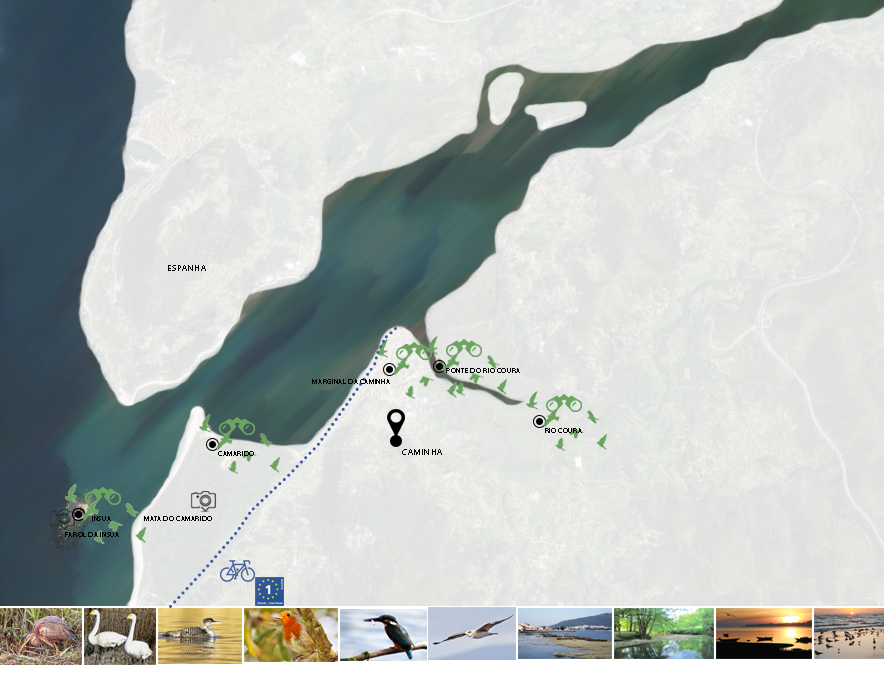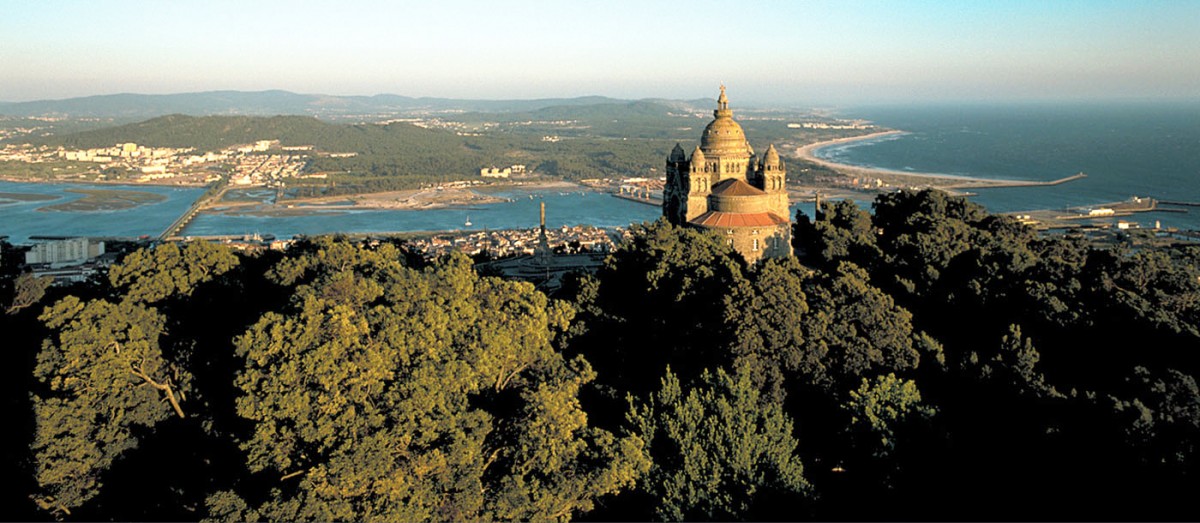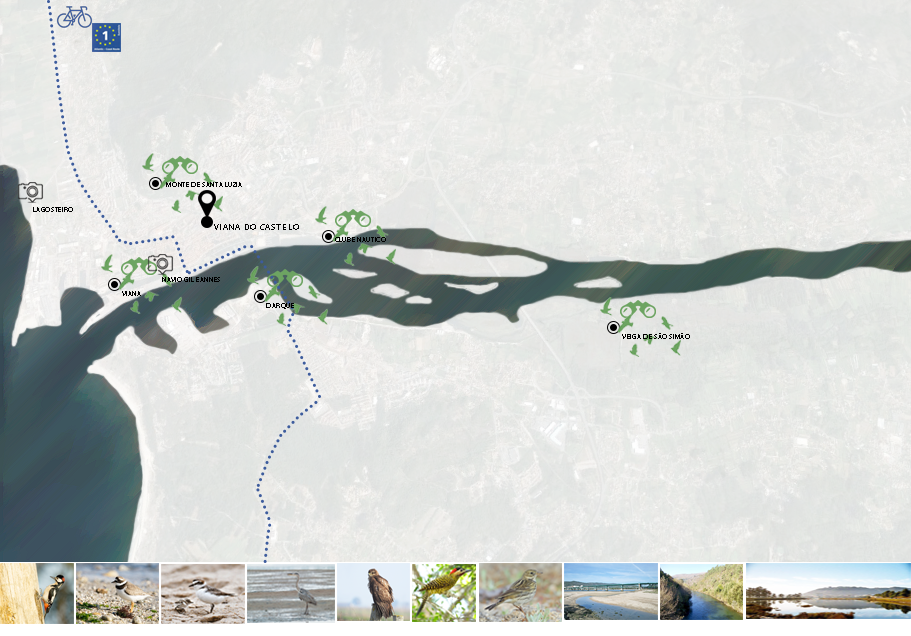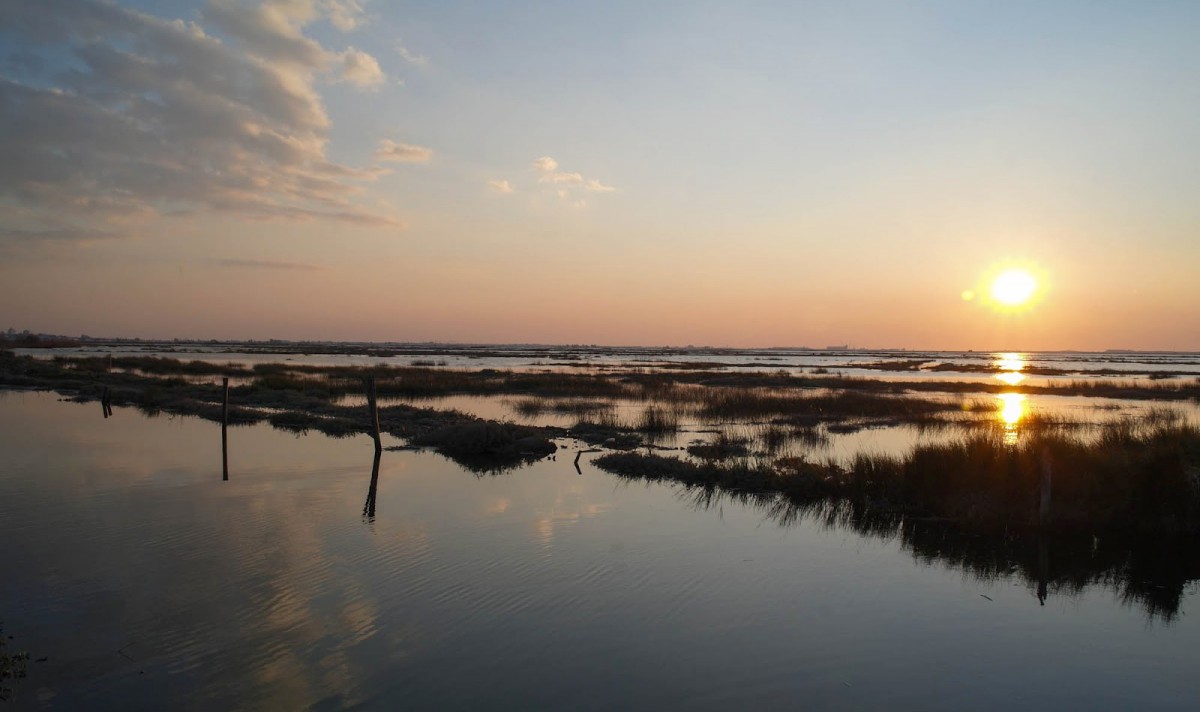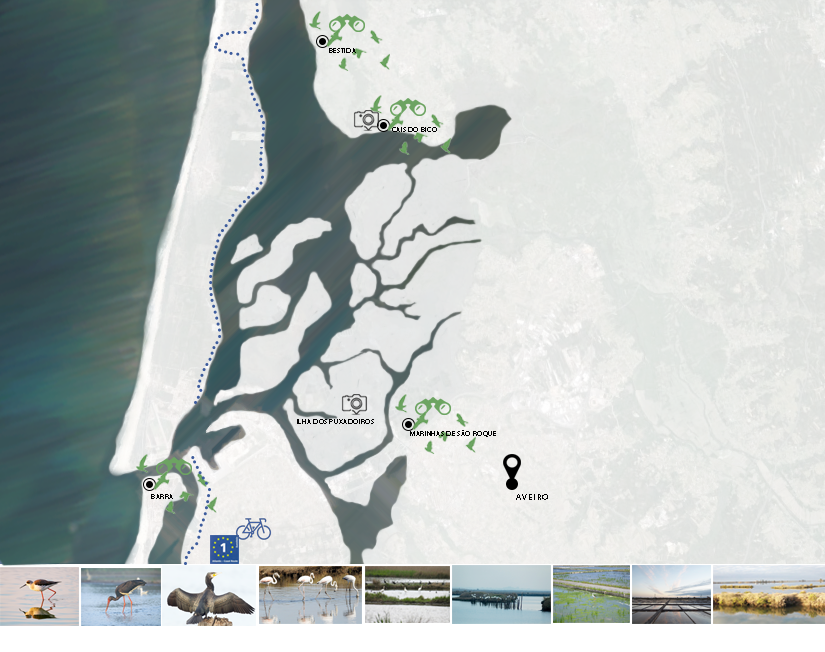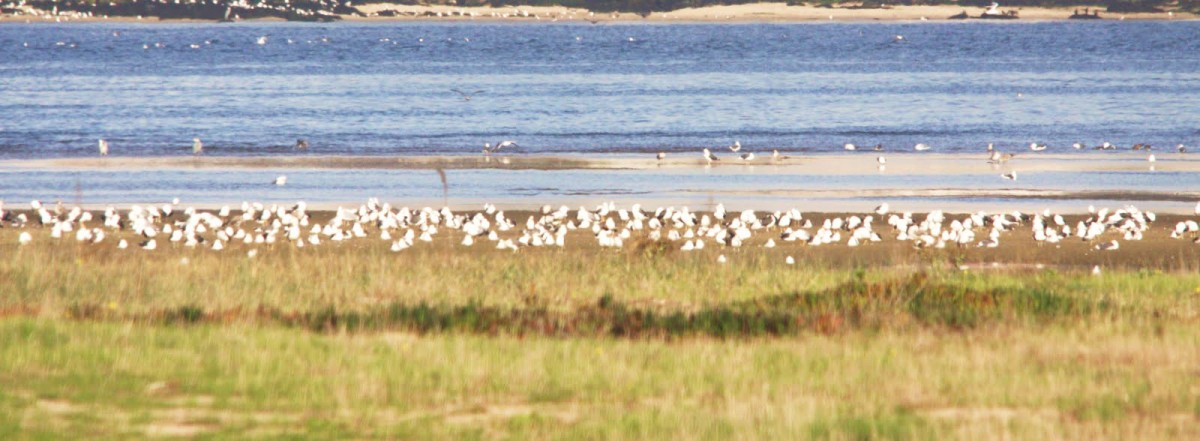Minho River
Luso-Spanish River on the border between the north of Portugal and Galiza. The river born in the Cantabrian mountains, in Spain and its course extends over about 340 km. The Minho river estuary is characterized by the existence of marshland areas and sandbanks. A landscape that ranges from habitats such as forests, woodlands, meadows, dunes and many watercourses with a fairly abundant riparian vegetation. A place full of diversity in fauna and flora, and one of the only places where you can find the Eagle-hawk, the Little Bittern and the Purple Heron, as well as interesting numbers of waterfowl highlighting the Scaup and the Cormorant.
Lima River
Luso-Spanish River that runs through all the Minho region. It is born in Spain in the province of Orense, and flows into the Atlantic Ocean, close to Viana do Castelo, after go through 109 km. Near the town of Viana do Castelo, the small estuary of Lima has a considerable richness of birdlife, with the presence of a considerable number of species during most of the year. Stand out from several species of water birds such as Eurasian Reed Warbler, Heron, Snowy Egret, Mallard, Moorhen, as well as some birds of prey (Western marsh harrier and Common buzzard). The vegetation is extensive and is quite dense in some places. The most common trees are the maritime pine, eucalyptus and english oak, in the lowlands also occur willows and alders.
Cávado River
The Cávado River born in the mountains of Larouco and flows into the Atlantic Ocean, near Esposende, after a journey of 118 km. It presents an interesting set of natural and semi-natural habitats in a good condition of conservation and high ecological relevance. In this sense it was created the North Coast Natural Park (PNLN) which intends the conservation of the areas that have great diversity and landscape richness. In this incredible landscape stands out the river waters, the mudflats, the marshlands, the Atlantic salt meadows with extensive reed beds, the small alluvial forests and the riparian galleries. The wide range of scenarios and its own dynamic, you can find a dense vegetation, in addition to a rich birdlife, which stands out Magpie (Pica pica), Great cormorant, gulls and mallards and species with the rarity status as the Swan-mute, the Barnacle goose or Ruddy shelduck. However, we should not be surprised if the in the reeds appear in between the first rays of sun the most distinguished species like the Short-eared owl, the Hawk or the Western marsh harrier.
Douro River
The Douro river borns in the Urbión Mountain, in northern of Spain, and flows into the city of Porto. It is the second largest river in Portugal and one of the largest rivers of the Iberian Peninsula with a total length of 928 km. The Douro estuary, located between the edges of the Porto and Vila Nova de Gaia cities, currently named by Local Nature Reserve of Douro Estuary, enjoys a special protection status that ensures the conservation of the biodiversity and the natural heritage of the place. The marshland area and the sands area that covers and uncovers with the tides (Cabedelo and the Bay of S. Palo respectively), have a great natural and landscape value with a favorable conditions for shelter and nesting of the birds, especially migratory species and waders. It is possible to find species such as Kingfisher (Alcedo athis), Cormorants and Herons (Ardea cinerea), Great egret (Egretta garzetta), Rock sandpiper (Actitis hypoleucos), Ruddy turnstone (Arenaria interpres), Plovers (Pluvialis spp), Red knots (Calidris canutus), Bluethroat (Luscinia svecica) and several species of Gulls. Also respectively to the flora is possible to find some protected plants, such as Jasione maritima, and Centaurea sphaerocephala and many others.
Vouga River/Ria de Aveiro
The Ria de Aveiro, with a length of 45km, is considered one of the most important geological formations with the high conservation value either in the national and international landscape. The Ria de Aveiro comes through the branch of the Vouga River that arrives at the Aveiro district,and is distributed in multiple channels, where it coexist islands and islets, initiating the formation of the Ria – one of the most beautiful Portugal coast landscapes. It features a large biodiversity and stands out the extensive areas of marshland, salines, reed bed areas and important agricultural areas. The marshlands and the seagrass are habitats with a great importance in this estuary, and you can find species such as Juncus maritimus, Spartina maritima and Zostera noltii. The Ria de Aveiro is presented as an important place of feeding and breeding for several species of waterfowl, and one of the most abundant are the waders. The beautiful landscape of this wetland is recognized for its diverse statutes of nature and biodiversity.
Mondego River
The largest and entirely Portuguese river which borns in the Serra da Estrela, a place known for Mondeguinho and flows into the Atlantic Ocean, near the Figueira da Foz city, after covering 220 km. In front of Figueira da Foz city, the Mondego River Estuary provides one of the principals salt workers centers in Portugal. In this rich and biodiversified landscape is possible to find a quite interesting faunistic species. Between the larger birds that frequent this place stand out the Flamingo (Phoenicopterus ruber), the Snowy egret (Egretta thula) and the Heron (Ardea cinerea). However, the waders are the specie which most contribute to the richness of this place. But also the vegetation, incredibly diverse, that ranges from the existence of poplars, willows, ash, alder, allow the flexibility and ensure the balance of this ecosystem.

